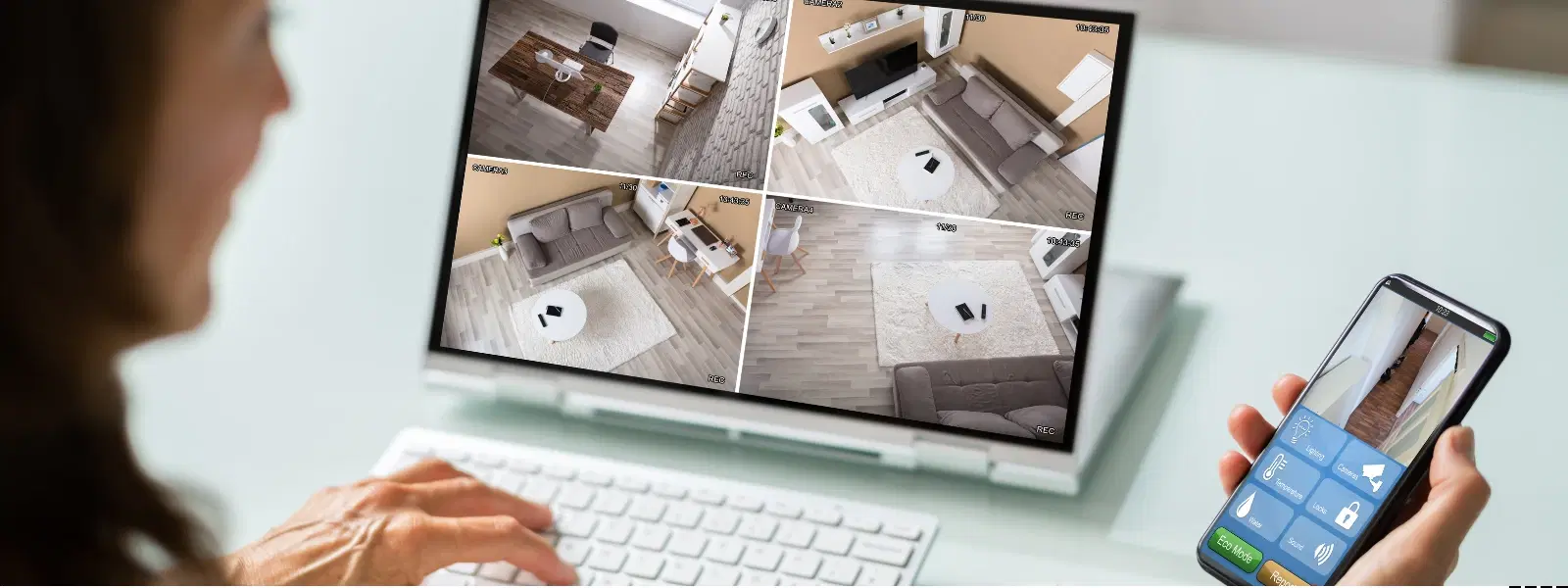
Consumer Electronics
•03 min read
Imagine needing crucial CCTV footage to solve a problem, only to find yourself unsure of how to access it. Whether you require the recording for legal purposes, insurance claims or ensuring your personal security, understanding how to get CCTV footage is essential. In this guide, we provide clear answers to your questions and detailed steps on how to retrieve security camera footage confidently and efficiently.
CCTV footage refers to the video recordings captured by security cameras. These recordings play a critical role in monitoring areas, resolving disputes and providing evidence in the event of accidents or theft. Recognising the importance of such footage can prove invaluable when you need to address issues related to personal or public safety.
Generally, you have the right to access footage from your own security systems. However, when it comes to footage owned by third parties, such as that recorded by business or public area cameras, legal permissions may be required. Always ensure you have the appropriate rights and documentation when making a request for surveillance video.
If you are accessing your own security system, start by logging into your DVR/NVR interface. Most systems allow you to playback CCTV video and easily download CCTV recordings to external storage devices. Follow the on-screen instructions to extract footage from DVR and save the security camera clips for future reference. For those customers enjoying the ease of shopping on Tata Neu, remember that you can also earn NeuCoins with every transaction, adding extra value to a smart and secure shopping experience.
When you need to access surveillance video recorded by a third party, it is essential to submit a formal request. Clarify the exact date, time and location for the required footage. Additionally, provide a clear reason for your request. These details increase the chances that your application is processed smoothly and in accordance with legal guidelines.
At times, you might find that some footage has been accidentally deleted or lost. There are specialised tools and recovery software designed to recover video from CCTV recordings. It is also wise to take preventative measures by backing up your files regularly, ensuring that an accidental deletion does not jeopardise vital evidence.
Modern security systems allow you to view recorded security footage on a variety of devices. Whether you prefer using a mobile phone, a computer or directly on a DVR monitor, ensure your chosen platform is compatible with the file formats of your recordings. This flexibility in viewing enhances access and convenience.
Saving security camera clips has never been easier. With the correct method, you can transfer surveillance footage to an external drive or even cloud storage. Download CCTV recordings for better organisation and to ensure you have backups in case of future technical issues. This process is similar to transferring your favourite tech accessories when shopping using Tata Neu, where the emphasis is on efficiency and reliability.
There are several potential issues that may hamper your ability to check CCTV recordings. Technical problems such as password protection, corrupted files or even hardware malfunctions can restrict access. Often, a simple troubleshooting step such as rebooting your system or verifying the connection can help resolve the issue.
Extracting footage from DVR systems involves a few clear steps. First, locate the segment of the video you wish to save. Then, use the export function to transfer the clip to your storage device. Ensure you maintain the best possible quality during the transfer process. For those new to this procedure, taking time to review the playback CCTV video settings can make the task simpler.
Pro Tip: Always back up your CCTV footage regularly to avoid losing critical data. Use external hard drives or cloud storage solutions to ensure long-term access and security.
Contact the owner of the CCTV system and provide specific details like date, time and location. If it is your own system, access the footage via the DVR/NVR interface.
Submit a formal request to the entity responsible for the CCTV system, explaining the purpose and providing relevant details. Include any legal documentation if required.
Yes, as long as the footage has not been overwritten or deleted. Use recovery software or consult a professional if the files are lost.
Access the DVR/NVR system connected to the cameras. Use the playback feature to locate the desired footage, then export it to a storage device.
Transfer the footage from the DVR/NVR system to your computer, then upload it to your mobile device via cloud storage or direct file transfer.
Retrieving CCTV footage does not have to be complicated. By learning how to get CCTV footage, knowing your rights and following the steps outlined above, you can efficiently access, save and recover video from CCTV systems. Whether managing your own security recordings or requesting footage from a third party, these tips offer a confident and systematic approach to handling surveillance video. Embrace the confidence that comes with knowledge and continue to enjoy a secure, smart lifestyle – much like the seamless benefits experienced when transacting on Tata Neu, where every purchase earns NeuCoins and offers Express Delivery for those time-sensitive needs.